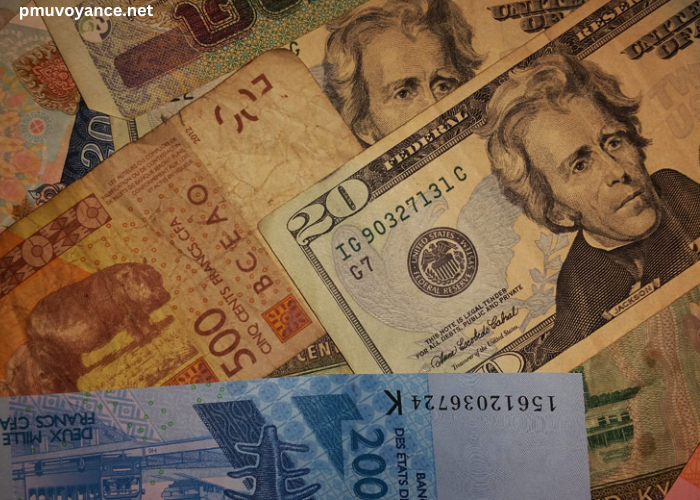In today’s global economy, the interplay between various currencies is pivotal to international trade, investment, and economic stability. Among the myriad of currencies that facilitate global transactions, the relationship between the US Dollar (USD) and the West African CFA Franc (XOF) stands out. This article delves into the intricate details of this currency pairing, exploring its significance, conversion rates, and the broader implications for both individuals and businesses operating in the CFA Zone.
The Basics of CFA Franc and US Dollar
The West African CFA Franc, commonly abbreviated as XOF, is the currency used by several West African countries, including Benin, Burkina Faso, Guinea-Bissau, Ivory Coast, Mali, Niger, Senegal, and Togo. It is pegged to the Euro and is managed by the Central Bank of West African States (BCEAO). On the other hand, the US Dollar, denoted as USD, is one of the most widely recognized and traded currencies globally, serving as the primary currency for international transactions and a benchmark for the valuation of other currencies.
The pegging of the CFA Franc to the Euro provides a stable exchange rate for countries in the CFA Zone, which is crucial for their economic stability. However, the exchange rate between the CFA Franc and the US Dollar is influenced by fluctuations in the Euro/USD exchange rate, global economic conditions, and geopolitical factors.
Exchange Rate Dynamics
The exchange rate between the CFA Franc and the US Dollar is not static. It varies depending on several factors, including economic policies, market demand, and international trade dynamics. Typically, the exchange rate is influenced by the Euro/USD rate since the CFA Franc is pegged to the Euro. For instance, if the Euro strengthens against the Dollar, the CFA Franc, by extension, might also strengthen against the Dollar. Conversely, if the Euro weakens, the CFA Franc might depreciate relative to the Dollar.
Understanding these dynamics is crucial for businesses and individuals who engage in transactions or investments involving both currencies. For instance, importers and exporters in the CFA Zone need to closely monitor exchange rate trends to manage their pricing and cost structures effectively. Similarly, investors looking to capitalize on currency movements must stay informed about the factors affecting the Euro/USD rate, as it indirectly impacts the CFA Franc.
Economic Implications
The relationship between the CFA Franc and the US Dollar has significant economic implications for the CFA Zone countries. Since the CFA Franc is pegged to the Euro, the stability of the Euro/USD exchange rate affects the cost of imports and exports for CFA Zone countries. A strong Dollar can make imports more expensive for countries using the CFA Franc, potentially leading to higher inflation and reduced purchasing power. Conversely, a weaker Dollar might make imports cheaper but could also affect the competitiveness of exports.
Moreover, fluctuations in the exchange rate can impact the financial stability of businesses and individuals. Companies that engage in international trade need to manage their currency risk to avoid losses due to adverse exchange rate movements. Similarly, individuals who hold assets or liabilities in USD may see changes in their value due to fluctuations in the exchange rate between the CFA Franc and the Dollar.
The Role of Central Banks
The Central Bank of West African States (BCEAO) plays a crucial role in maintaining the stability of the CFA Franc. It implements monetary policies aimed at controlling inflation and ensuring economic stability within the CFA Zone. The BCEAO’s policies and interventions can influence the exchange rate indirectly by affecting the broader economic environment in which the CFA Franc operates.
On the other hand, the US Federal Reserve’s monetary policies also impact the USD and, consequently, the CFA Franc’s exchange rate. Decisions regarding interest rates, economic stimulus measures, and other monetary policies by the Federal Reserve can lead to fluctuations in the Dollar’s value, which can, in turn, affect the CFA Franc.
Practical Considerations
For individuals and businesses dealing with both currencies, it is essential to stay informed about the exchange rates and economic conditions that impact them. Currency conversion tools and financial news sources can provide up-to-date information on exchange rates and market trends. Additionally, financial institutions and currency exchange services can offer guidance and assistance in managing currency risks.
Businesses involved in international trade should consider employing hedging strategies to mitigate the impact of exchange rate fluctuations. Hedging involves using financial instruments, such as futures or options contracts, to lock in exchange rates and protect against adverse movements. This approach can help stabilize costs and pricing, providing more predictable financial outcomes.
For individuals, understanding the exchange rate dynamics can be beneficial when traveling or making purchases in foreign currencies. Being aware of the current exchange rates can help in budgeting and planning for expenses, ensuring that one gets the best value for their money.
Conclusion
The relationship between the US Dollar and the West African CFA Franc is a complex and dynamic one, influenced by a range of economic, political, and market factors. Understanding this relationship is crucial for both individuals and businesses operating in or interacting with the CFA Zone. By staying informed about exchange rate trends and economic conditions, one can navigate the challenges and opportunities presented by currency fluctuations effectively.
As global economic conditions continue to evolve, the interplay between currencies like the Dollar and the CFA Franc will remain an important aspect of international finance. Whether for business, travel, or investment purposes, a thorough understanding of this relationship can provide valuable insights and aid in making informed financial decisions.



